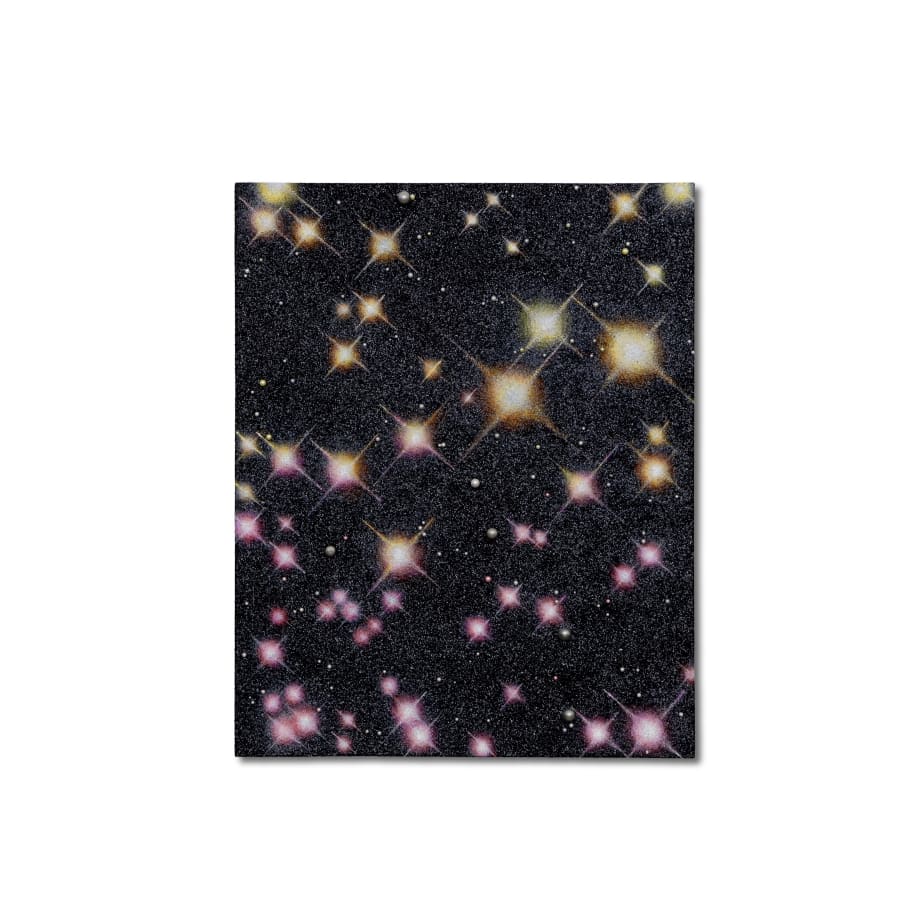If the stars make dragons fantastical, taniwha make them real.
~ Reuben Paterson, March 2025
Reuben Paterson's (b. 1973 Auckland Tāmaki Makaurau, Ngati Rangitihi, Ngāi Tūhoe, Tūhourangi) latest suite of paintings—transported from his new home in New York across Te Moana-nui-a-Kiwa to the shores of Aotearoa—takes the constellation of Draco or The Dragon as a leaping off point for circumnavigating whānau mārama, or the family of light, and a contemplation of celestial bodies.
Draco snakes its way through the northern sky as a circumpolar constellation only visible in northern latitudes. For this exhibition, Paterson transposes the constellation southward to Aotearoa, and in the process the mythical creature of the dragon undergoes a metamorphosis to living, breathing, taniwha.
Before the separation of Ranginui the Sky Father and Papatūānuku the Earth Mother, Rangi held both hemispheres in his embrace. What often isn’t talked about is that all his limbs were severed in that separation by their son Tāne, and Rangi was no longer able to hold the North, which floated from his embrace to become out of view. Here we were in the beginning of creation, living under one sky.
Paterson unravels the stars themselves, beginning with the moment of that first hara or transgression, back to when we were, as he puts it, “living under one sky.” Along the way, other pūrākau and creation narratives are woven into the fabric of these works, including the formation of the celestial whare as the body of Ranginui, which subsequently informed the traditional architecture of the wharenui and the Niho Taniwha or Taniwha’s Teeth tukutuku pattern associated with Paterson’s Matatā iwi Ngati Rangitihi of the Te Arawa waka.
These dynamic works see Paterson applying acrylic to the surface of the glitter. Every constellation has been meticulously mapped and plotted by the artist from images produced by The Hubble Space Telescope, and has become Paterson’s lens through which to view the constellations that connect the south to the north, and the north to the south. Each star is precisely positioned and scaled, represented by Cook Island Black Pearls and Japanese Fresh Water Pearls, referencing Pacific creation narratives around these aquatic jewels as the result of tears shed from the stars above.
Dina Jezdić has penned a response to the exhibition, entitled Bridging the Crepuscular.

